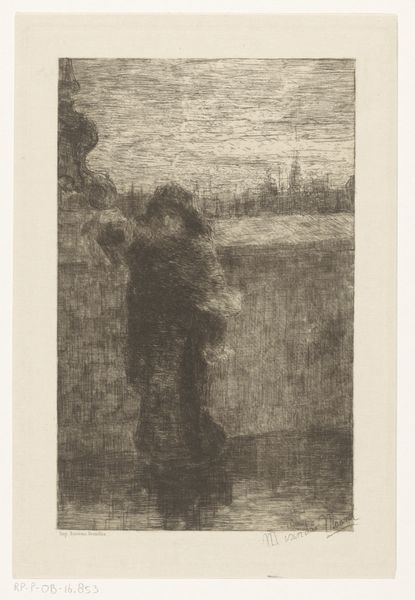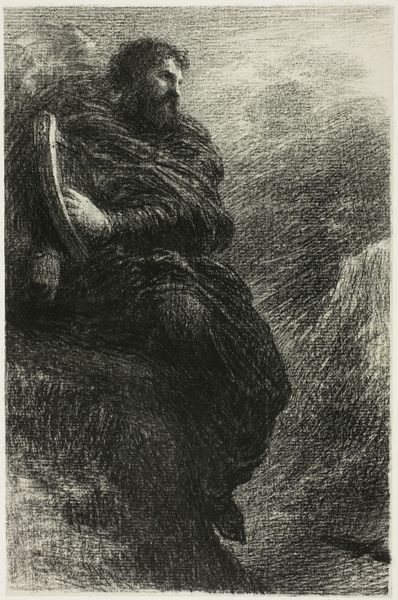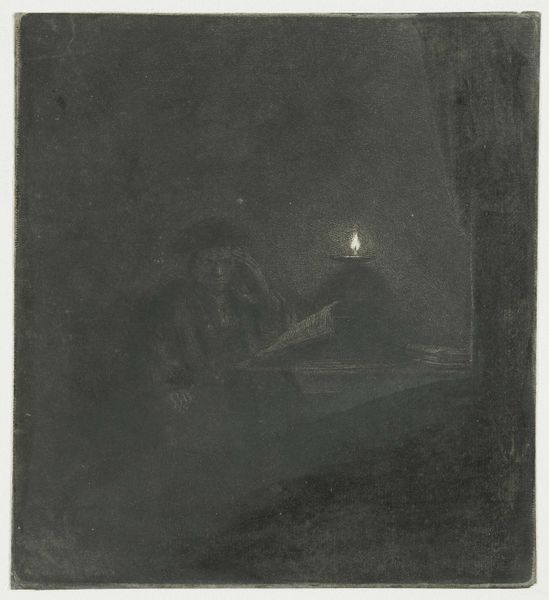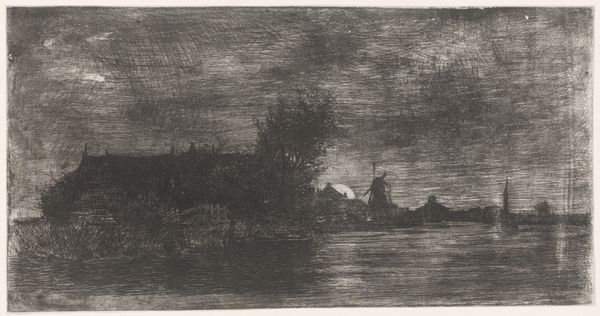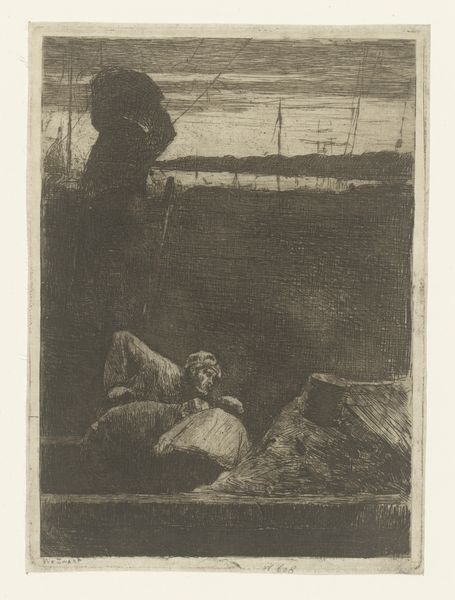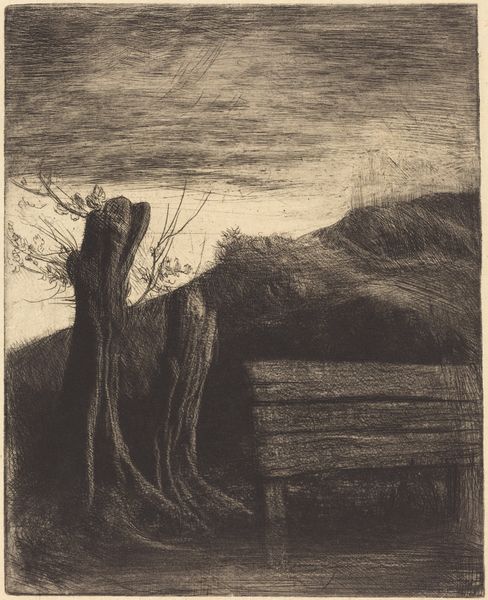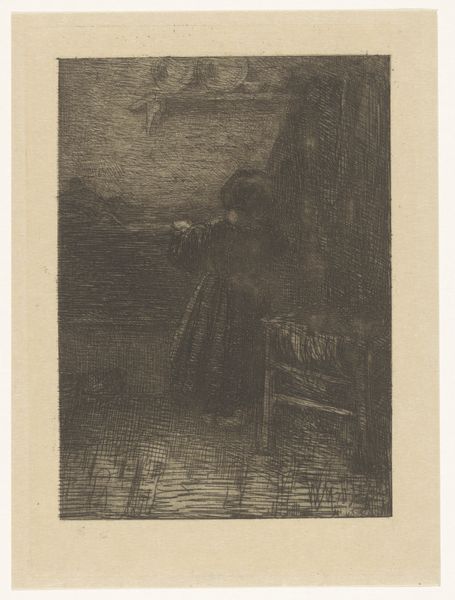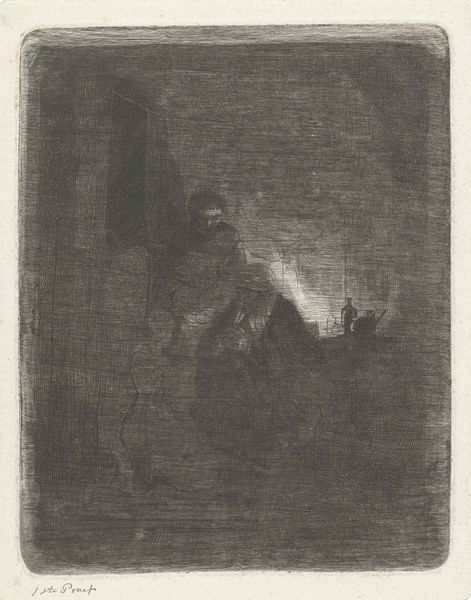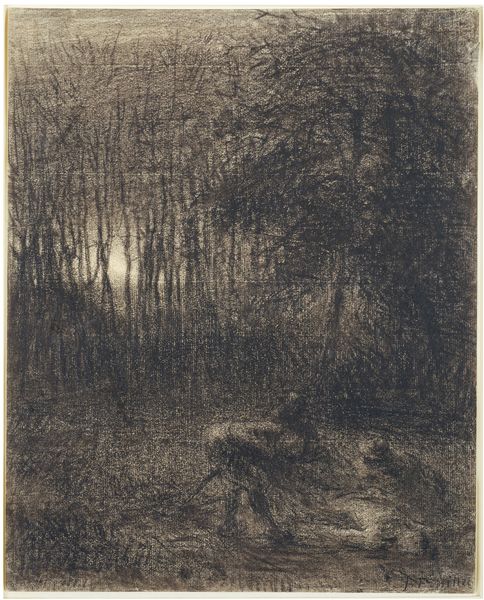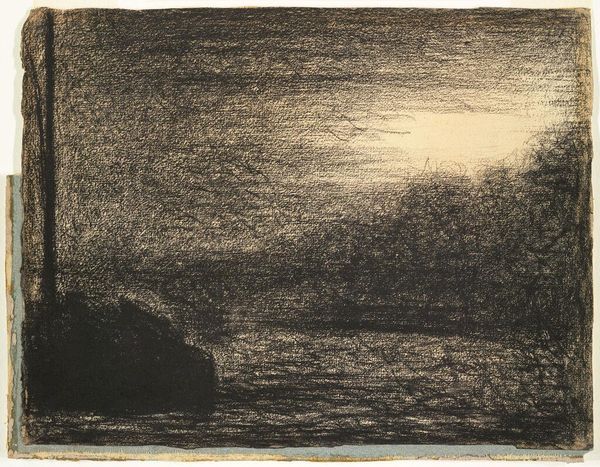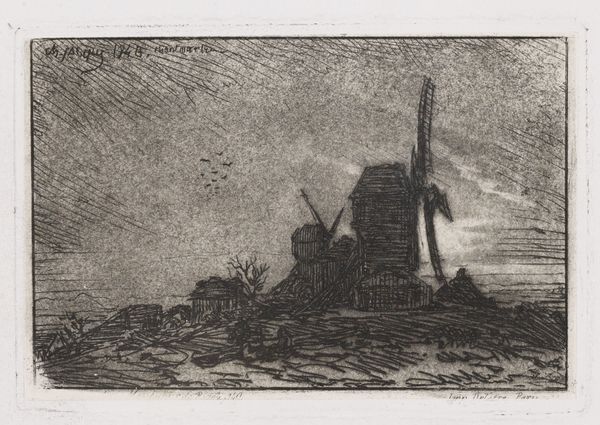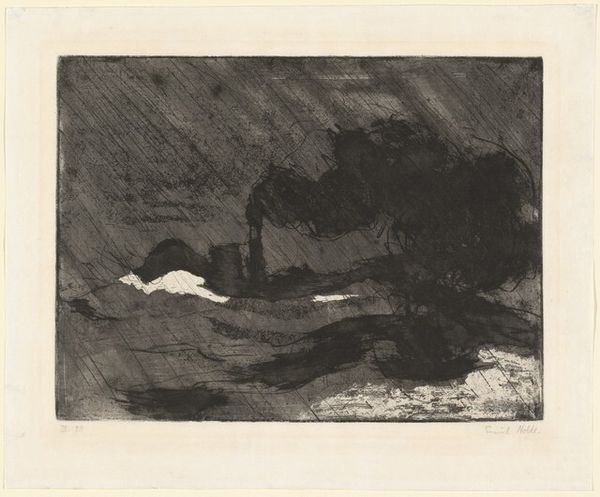
drawing, print, etching, pencil
#
drawing
# print
#
etching
#
landscape
#
pencil drawing
#
romanticism
#
pencil
Dimensions: 4 7/16 x 3 15/16 in. (11.27 x 10 cm) (plate)12 9/16 x 9 5/8 in. (31.91 x 24.45 cm) (sheet)
Copyright: Public Domain
Editor: Here we have Charles-Émile Jacque's "The Mill" from 1848, a print using etching and pencil. The somber mood created by the dark shading is really striking. What stands out to you most about this work? Curator: For me, it’s the fascinating tension between Jacque’s romantic subject matter and the labor-intensive process of etching. We see this picturesque windmill scene, yet the very act of creating it – the biting of the acid into the metal plate, the repetitive process of printing – speaks to the industrial processes that were rapidly changing the landscape at the time. Consider also the economics of printmaking. Who was the target audience, and how did the consumption of such images reflect societal values regarding landscape and labor? Editor: That’s a good point. The romantic scene hides a whole world of production and consumption. Does the material itself – the ink, the paper – inform your reading of the image? Curator: Absolutely. The choice of etching allows for incredibly fine detail but also mass production. It made images like this available to a wider audience than an original painting could ever reach. Think about the quality of the paper, too. Was it cheap or expensive? That would influence our understanding of its intended market and its value as a commodity. How does this materiality challenge traditional art hierarchies, where painting was considered superior? Editor: So you're saying the artwork itself isn't just about what's depicted, but also about how it was made and distributed. I hadn’t thought about it that way. Curator: Precisely. By focusing on the materiality and production, we can see how “The Mill” is embedded in its historical moment, reflecting both its artistic conventions and its socioeconomic conditions. What does viewing the labor of the artist contribute to our understanding of the final image? Editor: That really changes how I see not just this print, but art in general. Thanks!
Comments
minneapolisinstituteofart almost 2 years ago
⋮
Charles-Emile Jacque has been termed the "Raphael of Pigs," a name he probably would not have minded. His nearly 500 prints are filled with images of swine and poultry. He was among the group of French artists drawn to the bucolic village of Barbizon, outside Paris. In The Mill, one of the relatively few Jacque prints devoid of farm animals, the artist shows his fascination with atmospheric effects. By leaving a film of ink on the plate before printing, he was able to enhance the feel of his velvety drypoint lines. He liked small plates like the one used to make this print because he could carry them with him as he walked the land and make etchings from nature.
Join the conversation
Join millions of artists and users on Artera today and experience the ultimate creative platform.
